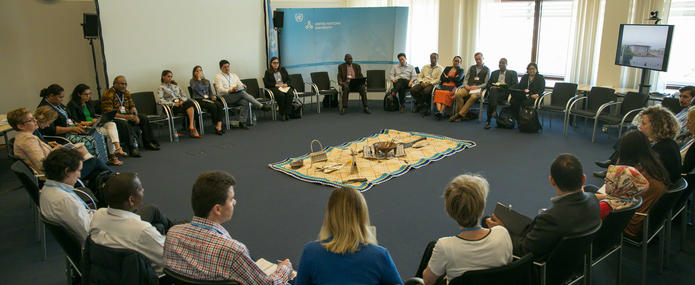Many countries are already feeling the effects of climate change, here and now. Yet, our challenge is that to address this emergency, we have to think about different time horizons. On one hand, to reach a “well below 2 degrees” or “1.5 degrees” world, our economies and societies need to operate transformations so radical that they can only be envisioned over the long term. On the other hand, policymakers have to make decisions today. These decisions can either lay the groundwork for the transformations needed, or lock us in a path of high emissions and vulnerability to climate impacts. In other words, the challenge is to link long-term climate objectives back to current policy choices, and integrate them into development priorities.
At the heart of this challenge lies the fact that having targets, however ambitious, is a great step… but insufficient by itself. The implications of these targets need to be unpacked, discussed in a domestic debate and supported by policies..Countries should not just plan the deployment of clean technologies, but also consider how a low-carbon future could serve their future demand for transport, or goals in terms of access to energy.
Since we’re here to present solutions…IDDRI has developed an approach to develop long-term climate strategies , which unpack the various drivers of a pathway to decarbonization, and can help bring to light the conditions for higher ambition.
IDDRI has already worked with research teams in 16 countries representing 70% of global GHG emissions, which provided input to their national climate planning.
We see four main advantages to our approach:
- Peer-learning:
We choose to coordinate the work of several countries at a time, and ensure they use consistent methodology. This facilitates mutual learning between different countries. - Capacity-building:
Each pathway is entirely led by local research teams. This contributes to increased ownership of decarbonization pathways, and ensure they capture the countries’ context. - Flexibility:
Our methodology is applicable to virtually any sector or national context. Countries can choose to inform in more detail an aspect of the transition that they find important. - Stakeholder engagement:
The assumptions and results have to be transparent, to allow an informed debate with businesses, industry and civil society.
Decarbonization strategies should not only take development priorities into consideration, but also future climate impacts. Our work to date has focused on mitigation, but our approach could be explored to build long-term resilience strategies.
We hope to see more Parties, but also cities and businesses build long-term climate strategies, and that these will be the basis for discussions on the feasibility and desirability of decarbonization pathways. Our approach, and the work of these countries’ teams provides a building block for all to raise ambition in a credible manner. We are here to offer our support, and ensure that everyone steps up and commits to a higher and more credible ambition by 2020.
This text is the transcription of an intervention made by IDDRI in the framework of the Talanoa Dialogue organized by the Fijian presidency of COP 23 to inform the review of States’ climate contributions by 2020. The presidency asked three questions "Where are we? Where do we want to go? How can we get there?", answered in roundtable sessions mixing countries representatives and non-state actors. IDDRI's intervention presented the DDPP approach in the context of the third question, highlighting its benefits for achieving carbon neutrality in the second half of the century.
Photo credit: IISD Reporting Services


